sigmoid function also logistic function
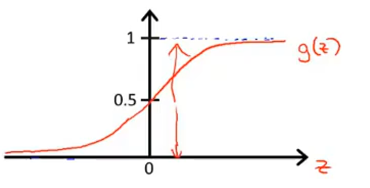
“分类问题”–逻辑回归算法
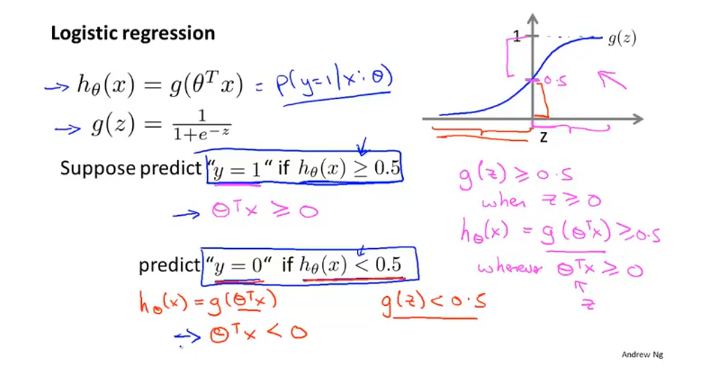
决策边界 不是训练集的属性,而是假设本身和其参数的属性
计算的是 属于1 的概率
cost function
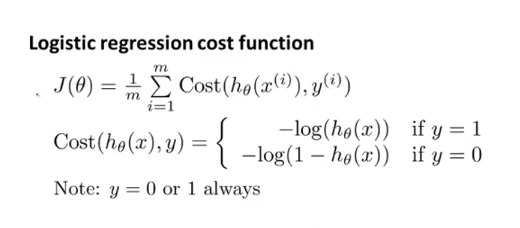
适用于梯度下降的变形式:

综上:
来源于统计学的极大似然估计法—-凸函数
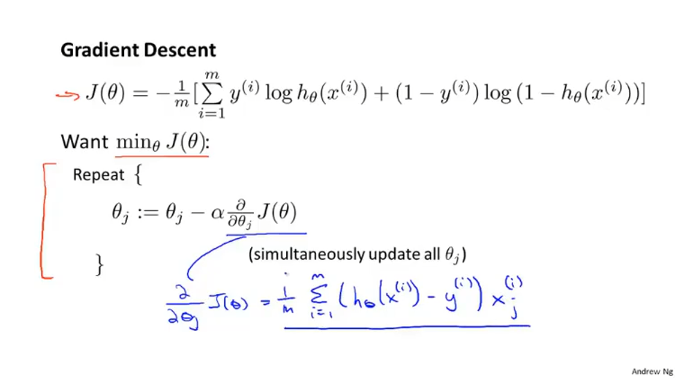
高级优化
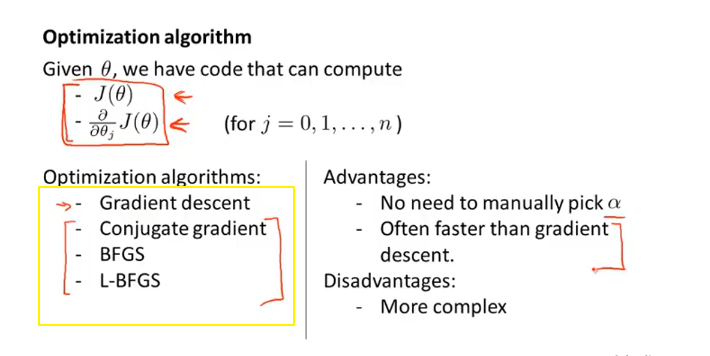
使用库~直接调用,适用于大型的机器学习
多元分类:”一对多“分类
采用多个分类器,针对其中一种情况进行训练
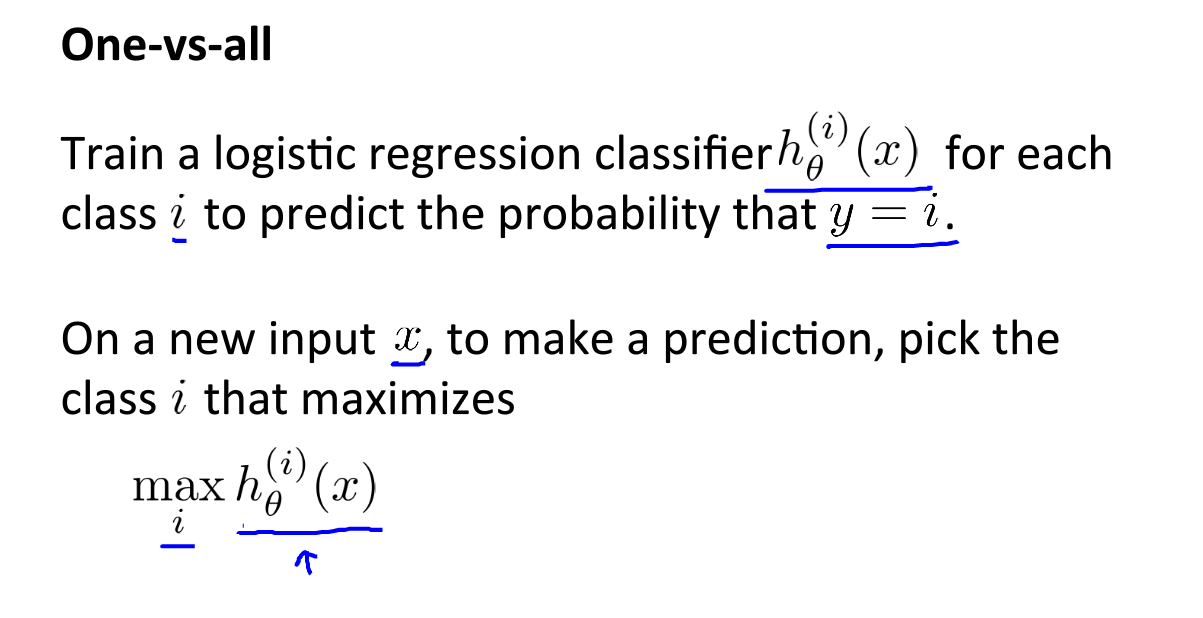
拟合
泛化 :一个假设模型应用到新样本的能力~
欠拟合/过拟合 高方差
减少特征变量
但是同时舍弃了一些有用信息
正则化
简化假设模型,更少的倾向过拟合
线性回归正则化
后一项是正则化项
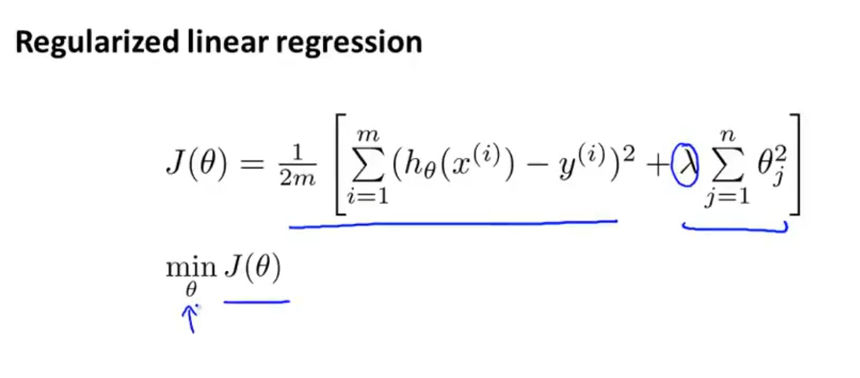
1 | 不惩罚 θ_0 |
(1)梯度下降: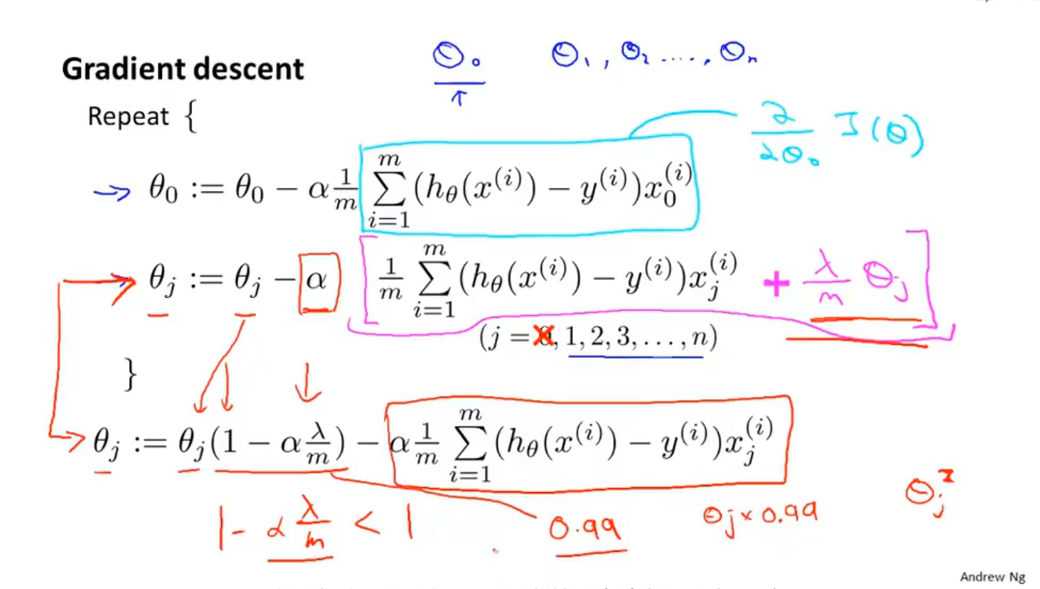
(2)正则化方程: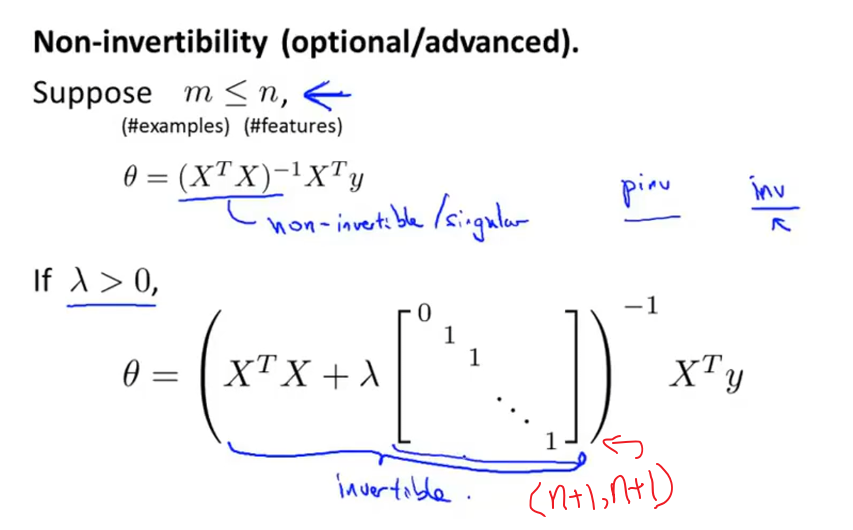
虽然octave在一般的正则化方程中 pinv() 可能会给 奇异矩阵 可逆结果,但是这不能泛化。但经过正则化 正则方程后,一定是可逆的。
逻辑回归正则化
1 | 不惩罚 θ_0 |
注意:虽然看起来和 线性回归一样,但是 h(x)不同
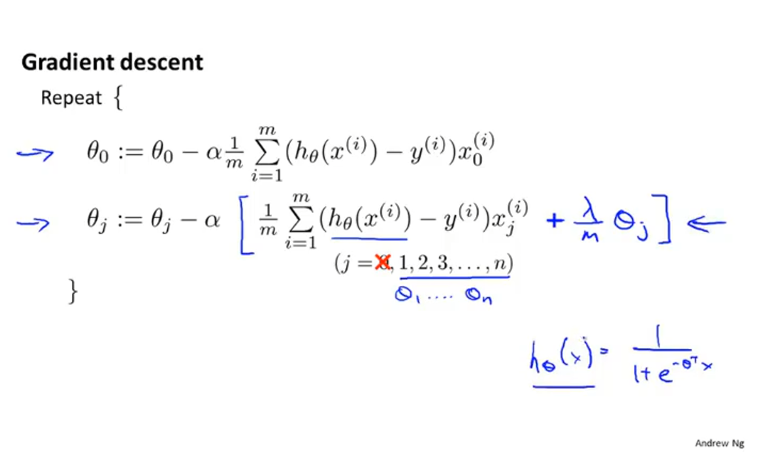
(3)高级算法:
fminunc() :函数在无约束条件下的最小值
不需要写任何循环,也无需设置循环;只需要提供一个计算“代价”和“梯度”的函数,就返回正确的优化参数、代价值、θ
tips: octave下标从1开始。。
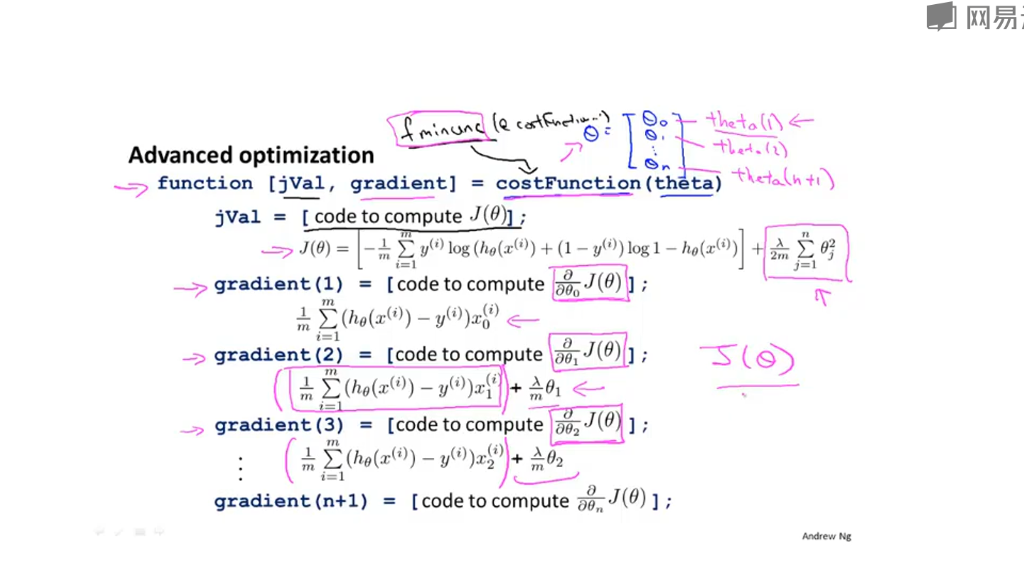
编程作业
costFunction.m
1 | function [J, grad] = costFunction(theta, X, y) |
costFunctionReg.m
1 | function [J, grad] = costFunctionReg(theta, X, y, lambda) |
plotData.m
1 | function plotData(X, y) |
predict.m
1 | function p = predict(theta, X) |
sigmoid.m
1 | function g = sigmoid(z) |